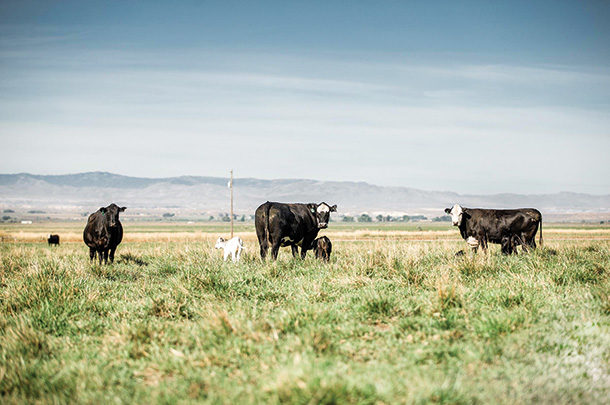As a producer, you strategize your mating decisions with expected progeny differences (EPDs), genomics, feed efficiency databases and years of production history to meticulously accelerate your herd as though you are calculating chess piece movements across a board.
You study your donors and select sires with traits to rapidly advance the rest of your herd. These donors range in age from a first-calf heifer to a 13-year-old proven dam. No matter the age, you want to replicate your top donors across your entire herd. In a natural breeding scenario, a cow will only have one calf a year and return a few daughters to the herd throughout her lifetime.
Today, technology is readily available to guide and expedite your mating decisions across the board with bovine in vitro fertilization. Embryo technology has been available since the 1980s, but the process used today has evolved immensely and is much easier to implement than it once was. As part of this evolution, in vitro fertilization technology, more commonly known as IVF, has developed to allow cows to make embryos while staying in the breeding herd and calving on a regular interval. In vitro fertilization-produced embryos have taken off since 2010 and surpassed in vivo-derived (conventional embryos) since 2016. So how can your operation get started making IVF embryos?
Choosing donors
Take the time to pore over the genomic data, phenotype and performance data to determine the females in your operation that have risen to the top. With the flexibility of in vitro fertilization, females that are open, 15 days postpartum or less than 100 days into gestation qualify to be a donor. In addition, the age of donor females can range from yearling heifers to senior dams. Unlike conventional embryo transfer, females that are prepubertal, bred or in anestrus can also qualify as a donor using in vitro fertilization.
Ovum pickup
Once donors are selected, the in vitro fertilization process starts with ovum pickup (OPU). The OPU technician palpates the ovary rectally and aligns the ovary with the ultrasound-guided needle assembly to collect immature oocytes from follicles on the donor’s ovaries. Each follicle should contain an immature oocyte that will be aspirated. Follicles are always growing on the ovary, even during pregnancy, anestrus and before puberty. The fluid-filled follicles grow in follicular waves, recruited out of the follicular pool and will grow from small, medium to large depending on the gonadotropin secretion. Through this non-surgical procedure that takes less than 15 minutes, small, medium and large follicles are collected off both ovaries by the OPU technician. After collection, the best oocytes are identified and sent to the lab for fertilization within 24 hours. After fertilization, embryo production is complete seven days later.
Breeding donors
It is important to note that using bovine in vitro fertilization is not going to disturb a donor’s normal estrous cycle. The flexibility of in vitro fertilization allows you to tailor collections for each donor based on your total embryo goals, in addition to breeding plans for both the individual donor and the whole herd.
“Minimizing stress post-breeding is essential to maintaining any pregnancy. The OPU process is safe for pregnant donors up to 100 days of pregnancy,” says Nathan Schmidt, reproductive director for Vytelle. He continues, “We work with the producer to maintain their donors’ natural reproductive cycles while replicating their elite genetics through hormone-free in vitro fertilization.”
OPU collections can be performed on heifers, open cows as early as 15 days after calving and pregnant donors, up to 100 days pregnant. Strategizing with the OPU team to develop the timeline of collections around breeding will allow them to guide you in successfully accelerating your elite genetics.
Developing a plan
Ask yourself these questions when designing embryo programs for your operation and review with the OPU team so they can help you meet your goals.
- How many embryos are you looking to produce?
- What is your timeline for making embryos?
- When do you want your donor bred?
- Are you trying to maximize rare semen?
Maximize total annual embryo production: If your goal is to make as many embryos as possible during a year, OPU collections can begin as soon as 15 days postpartum and continue bimonthly through 100 days of gestation. Your donors can be set up for breeding in this time frame without taking a break from collecting oocytes. As part of this setup, discuss these particulars with the OPU veterinarian so they can leave dominant follicular structures on the ovary to suit the synchronization protocols and breeding timeline.
Getting donors bred: If getting the donor rebred is your top priority, she can be collected from 15 to 60 days postpartum and take a break for breeding. Pregnancy checks can occur as soon as 28 days post-breeding, despite the fetus not being fully attached to the placenta until day 40. Once the donor is checked safe, OPU can be resumed after day 40 through 100 days of pregnancy if more embryos are desired.
Maximize embryos per collection and/or rare semen: If you are trying to maximize embryos per collection or maximize rare semen with a certain donor pool, it may be best to wait until a donor has a first heat post-calving to ensure she has resumed regular cyclicity and reached optimal hormone levels; this can be anywhere between 30 and 60 days postpartum. With IVF, a single unit of semen can be efficiently used on multiple donors that are collected on the same day. Discuss your donor matings and order of priority with the OPU team to ensure successful collection and fertilization timing.
To integrate the donors that are part of collection into part of your whole-herd breeding program, progesterone devices can be inserted after the OPU to complete a synchronization protocol before the next collection.
Other IVF applications
While frozen genetic sales continue to increase annually, it’s good to remember that bovine in vitro fertilization can be utilized on a variety of donors that cannot be bred. For example, in vitro fertilization can be used on donors that cannot carry their own calf due to a previous injury. In addition, prepubertal females that carry the newest genetics can be aspirated as soon as palpation is possible. It is exciting to have the option to use embryo transfer on young females before they even have their first natural calf, and this hormone-free, advanced reproductive technology allows genetics to be replicated without hindering the natural breeding or reproductive process.
Overall, IVF works extremely well to keep donors in the breeding herd while you are advancing their genetics throughout the herd with embryo transfer. The process is simple, no shots or setup required, and it can be performed on a wide variety of donors. Keep the ability to utilize in vitro fertilization during donor pregnancy in mind when you are plotting new moves to advance the speed of genetic progress on your operation.








